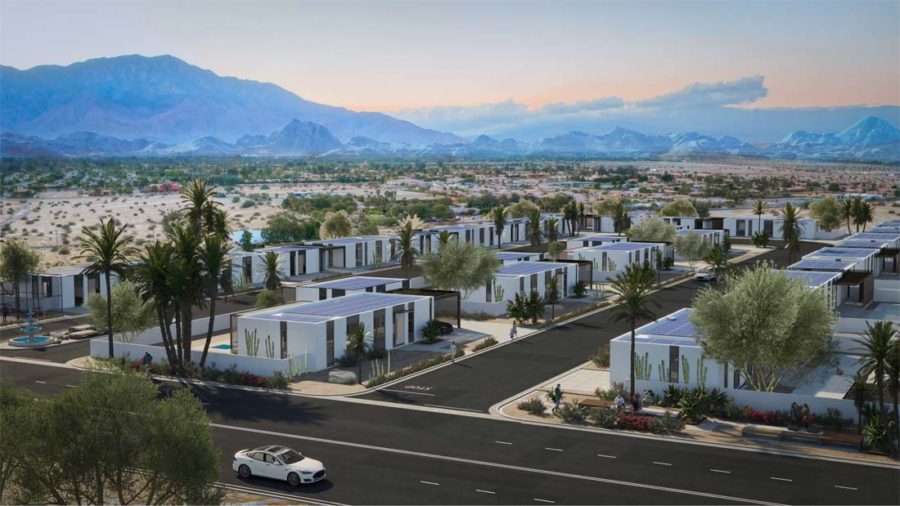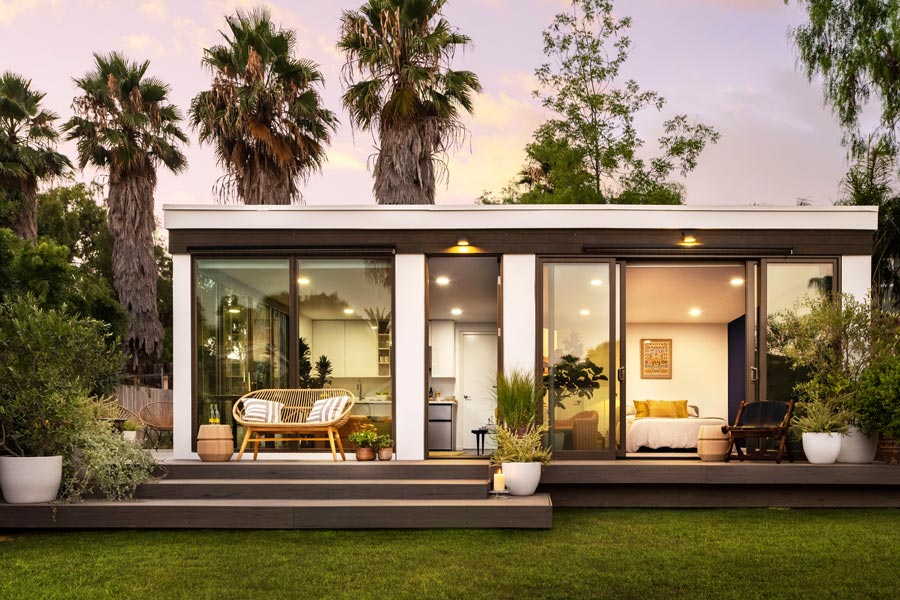Over the past decade, 3D printing technologies have been described as one of the construction industry’s most promising innovations. Proponents believe that 3D printing will help reduce materials waste and cut down on labor requirements, a particularly critical innovation in a time when a nationwide shortage of skilled on-site construction labor is at an all-time high. The market for 3D printed construction is steadily growing, with some industry analysts predicting that it will be valued as high as $1.5 billion by 2024.
Now, Oakland, California-based Mighty Buildings is taking 3D construction technology one step further. Using a new printable composite material that hardens when exposed to light, the company aims to create a new model of 3D printing that will allow architects and builders to assemble innovative structures under budget and in record time.
An innovation in material use
As Sam Ruben, chief sustainability officer and co-founder of Mighty Buildings explained, innovation in materials is the start of what makes the company’s process different. The foundational material the company uses was actually inspired by a surprising source—CTO and co-founder Starodubtsev’s experience designing 3D printed pens. He wondered what it might look like to take the idea of photo curable material and apply it to the construction space—and eventually, Mighty Buildings was born.
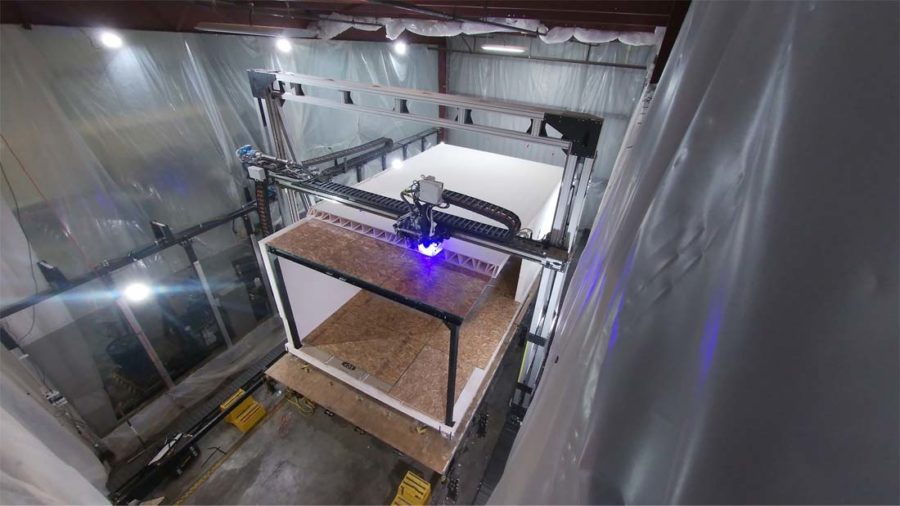
“We’ve developed a unique 3D printing technology that uses light to harden the material,” Ruben said. “One of the big differences between us and a lot of the 3D printing that’s out there is that most of what you see uses concrete and mortar. So what they’re actually doing is printing permanent formwork that they still have to manually install rebar onto and then pour aggregate into in order to meet code.”
The Mighty Buildings team worked closely with global safety certification company UL to develop a printable material that would be code compliant without the addition of any external components.
“We were able to create the world’s very first evaluation report for a non-cementitious 3D printed material, which served as the basis for the creation of a new standard, UL 3401,” Ruben said. “3401 has been used as the basis for a series of adoptable tendencies in the 2021 International Residential Code. What this means is that we can use 3D printing for all parts of a structure. It unlocks things like the ability to do freeform design or organic shapes as well as providing a massive increase in efficiency to really maximize the value of the existing labor force in order to help solve the housing affordability crisis.”
Reducing labor needs
For Ruben, one of the primary advantages to the company’s materials and workflow process is how dramatically it reduces the need for on-site labor. Industry-wide labor shortages have been rising for the past decade. “There’s something like 400,000 construction jobs open in America right now and no one’s taking them,” he said. “We don’t have the skilled laborers, and we don’t have new people joining the workforce in construction. We need a system that really takes advantage of the people who are here and also has the potential to attract a new generation of workers into the industry by giving them the chance to work with the latest technology in a safer environment.”
According to Ruben, the Mighty Buildings system dramatically reduces the strain on site workers’ physical health. “What we’re doing is taking over the most dangerous and difficult parts of the build with 3D printing and robotics,” he said. “Framing is something like 20% of all OSHA complaints—it’s the second most dangerous job in America after mining. We’re able to take those most dangerous elements of the build and leverage 3D printing and robotics to really maximize that human touch. This means that there’s easier and less work per unit, but with a goal of increasing production by more than 20 times.”
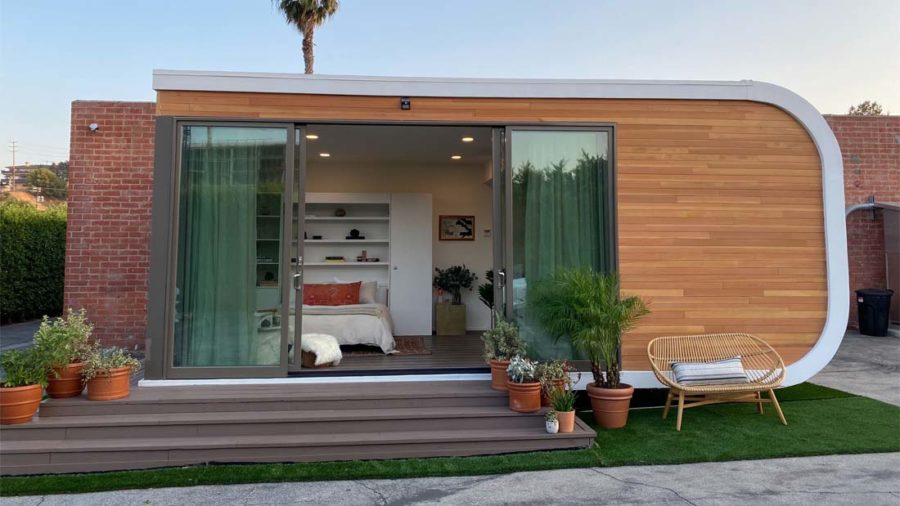
Ruben believes that the Mighty Buildings system can increase efficiency and safety on a variety of projects across the industry. “We want to be a tool for the industry,” he said. “We want to allow the people who know what they’re doing to do it better and to do it faster. We’re not trying to get rid of the existing labor force or replace those workers; we’re really trying to help address the fact that we just don’t have enough people.”
An automated answer to housing affordability
As Mighty Buildings continues to increase its ability to build at scale, Ruben hopes that the company’s technology will help in addressing a looming global problem: affordable housing. “By 2025, one in three urban dwellers globally are going to be facing housing scarcity,” Ruben said. According to the National Low Income Housing Coalition, there is a national shortage of more than 7 million affordable homes.
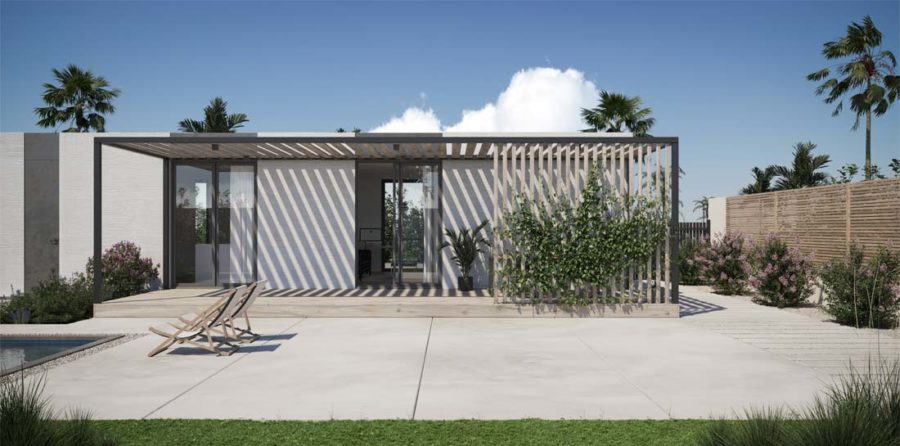
With a flexible network of on-demand 3D printing facilities, Ruben believes that Mighty Buildings has the technology to provide solutions to America’s housing crisis. “Because of our ability to set up a relatively small footprint in existing warehouse space, we’re actually able to set up where we have partners,” he said. “We can set up a warehouse in say, Detroit, for example, that serves that market so we’re not exporting California costs. We’re reducing those logistic costs, we’re reducing the carbon from the transportation and we’re also providing housing for the local market plus new jobs.”
These “Mighty Factories” have already been put to use in the company’s most ambitious project yet: an entire Southern California neighborhood of 20 units, a project that Ruben said will be the world’s largest 3D printed development. “I’m really excited for this opportunity to deploy our units as a development,” he said, “and really begin to show what it means to do this at scale, not just a unit or two in people’s backyards, but 20 units at a time. We’re not going to solve the housing affordability crisis by doing one or two units here and there. That’s just not going to solve the problem. We need solutions that scale.”
